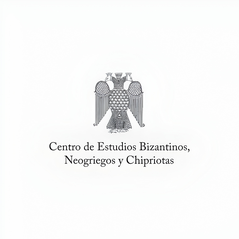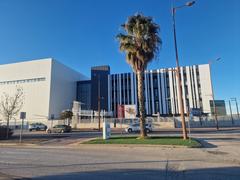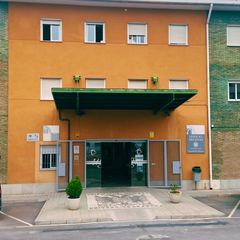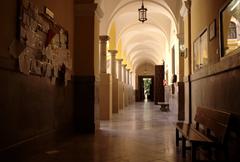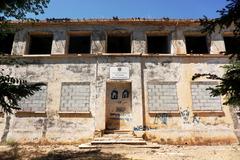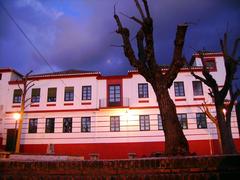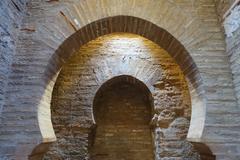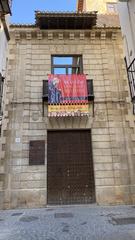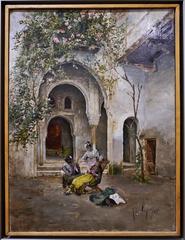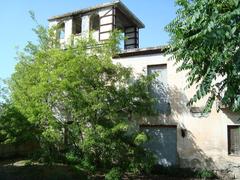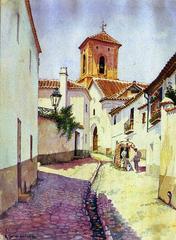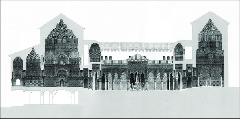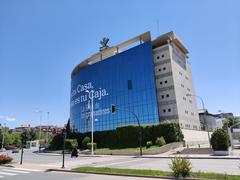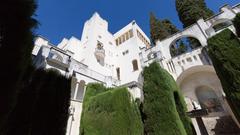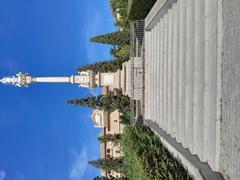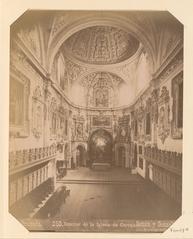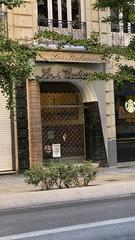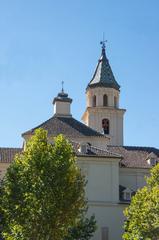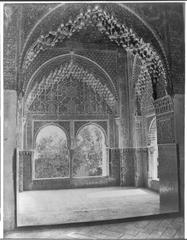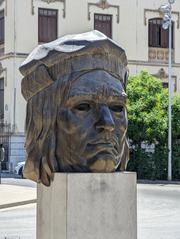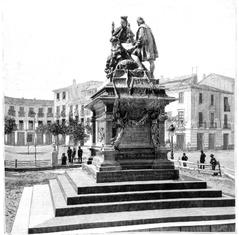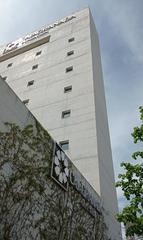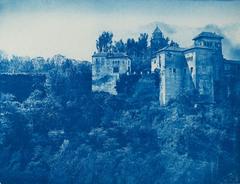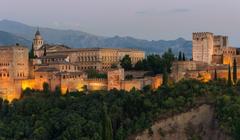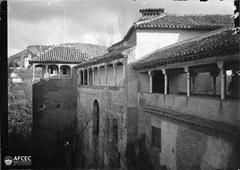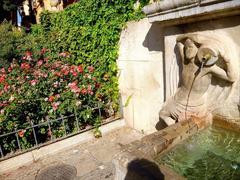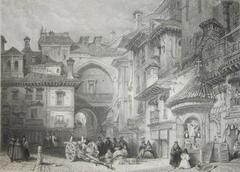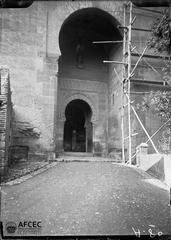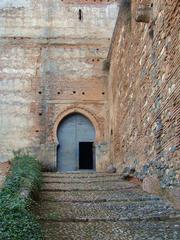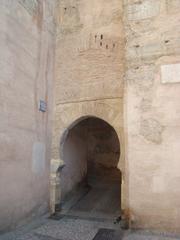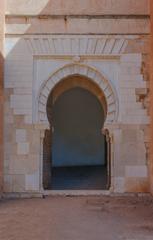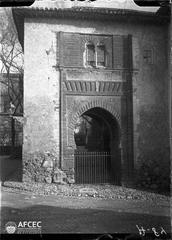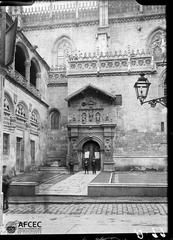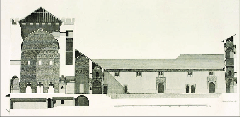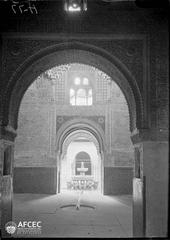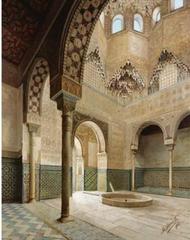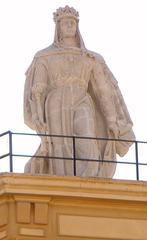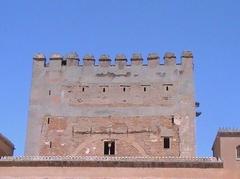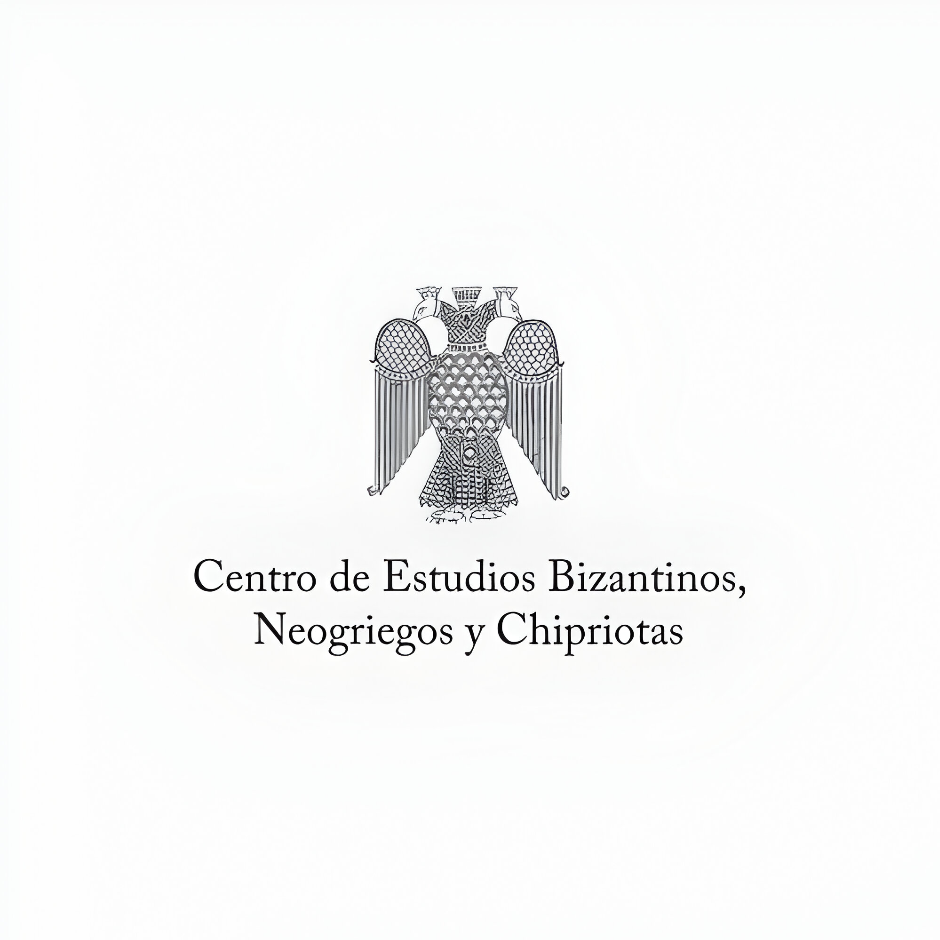
University of Granada Visiting Hours, Tickets, and Historical Sites Guide
Date: 14/06/2025
Introduction
The University of Granada (Universidad de Granada, UGR) is one of Spain’s oldest and most esteemed academic institutions, deeply integrated into the historic and cultural fabric of Granada. Established in 1531 by Emperor Charles V, its heritage stretches back to the 14th-century Nasrid madrasahs, blending Islamic and Christian scholarly traditions. This unique legacy makes UGR a remarkable destination for travelers, history buffs, and prospective students. The university’s central campuses provide access to architectural masterpieces such as the Hospital Real and the Madrasah of Granada—key sites reflecting Andalusia’s rich past (Times Higher Education; UGR English Portal; Love Granada).
With a vibrant community of approximately 80,000 students and a robust international exchange program, UGR is at the heart of Granada’s cultural, social, and academic life. Visitors can explore not only the university’s historical sites but also its dynamic public events, exhibitions, and festivals that celebrate the region’s traditions and modern achievements (Idealista Erasmus Guide; Spain.info).
This comprehensive guide provides everything you need to know about visiting hours, ticketing, university highlights, and practical travel tips—ensuring a rewarding and seamless experience at the University of Granada and its surrounding attractions, including the nearby UNESCO World Heritage sites of the Alhambra and Albaicín (Alhambra Official Site; Granada Tourism).
Historical Overview
Origins and Foundation
The University of Granada was founded in 1531 by Emperor Charles V, building upon Granada’s legacy as a center of Islamic scholarship. Its intellectual origins are rooted in the Madrasah of Granada, established in 1349 during the Nasrid dynasty, which set the stage for a later Christian university (Shanghai Ranking; Granada.info).
The university’s establishment marked a new era after the Christian conquest of Granada, integrating the city into the broader Renaissance culture of Castilian Spain and transforming its educational landscape.
Academic Growth and Reputation
UGR began as a multidisciplinary institution, focusing on theology, law, medicine, and the arts. Over the centuries, it has expanded to become one of Spain’s largest universities, with 22 faculties, 116 departments, and a diverse range of undergraduate, master’s, and doctoral programs (Times Higher Education).
Today, the university is internationally recognized for its research output and multicultural student body, ranking among Spain’s top higher education institutions (EduRank 2025; UGR Facts & Figures).
Architectural and Cultural Heritage
UGR’s campuses are closely integrated with Granada’s historic city center. Many faculties are housed in centuries-old buildings that are themselves architectural landmarks.
Key University Sites
- Hospital Real (Royal Hospital): Commissioned by Queen Isabella I, this Renaissance masterpiece serves as the university’s administrative heart. Its grand courtyards and intricate stonework are open for public viewing and often host exhibitions (Love Granada).
- Madrasah of Granada: Founded in 1349, this site is the direct link to Granada’s Islamic educational past. Now a cultural center, it showcases exquisite stucco and Moorish architectural details (Love Granada).
- Faculty of Law and Faculty of Philosophy and Letters: Housed in historical buildings with significant architectural and cultural value, these faculties are accessible during academic hours and special events.
- University Botanical Garden: Located near the Faculty of Sciences, the garden features a diverse array of Mediterranean and exotic plants—an ideal spot for relaxation (Faculty of Sciences).
Research, Internationalization, and City Life
UGR is a leader in research and internationalization. It operates 12 research institutes, participates in the Coimbra Group, and is a top Erasmus destination, welcoming thousands of international students annually (Times Higher Education; Idealista Erasmus Guide). The university’s multicultural character shapes Granada’s vibrant city life, contributing to a dynamic calendar of public lectures, concerts, and festivals (Spain.info).
Essential Visitor Information
Visiting Hours
- Hospital Real: Monday to Friday, 9:00 AM – 6:00 PM. Closed weekends and public holidays.
- Madrasah of Granada: Tuesday to Sunday, 10:00 AM – 7:00 PM. Closed Mondays.
- Faculty Buildings: Open during academic hours (typically 9:00 AM – 8:00 PM, Monday to Friday). Access may be restricted during exams or special events.
Tickets and Guided Tours
- Admission: Most university sites, including the Madrasah, are free to visit. Special exhibitions or guided tours may require a nominal fee.
- Guided Tours: Offered in Spanish and English during festivals, open days, and by arrangement. Advance booking is recommended, especially in high season.
- Cultural Events: Many university events, exhibitions, and performances are free and open to the public (Learn International).
Accessibility
- Mobility: Many buildings are accessible, but some historic sites may have limited wheelchair access. Confirm details on the UGR website.
- Language: Spanish is the dominant language, but English is widely spoken in international offices and during guided tours.
COVID-19 Guidelines
Check the university’s official website for the latest health and safety protocols, which may include mask-wearing or social distancing in indoor spaces.
Visiting Experience and Practical Tips
- Best Time to Visit: September to June, when the university is most active. Spring and autumn offer pleasant weather.
- Getting Around: Granada’s compact center is pedestrian-friendly. Buses connect major sites and campuses. Parking is limited—public transport or walking is recommended.
- Dining: The university district is known for affordable tapas bars, many offering free tapas with drinks—a tradition closely linked to student life (Emma’s Daydream).
- Accommodation: University residences may be available in summer; homestays offer immersive experiences (Learn International).
- Safety and Etiquette: Granada is generally safe. Respect academic spaces and observe posted guidelines during your visit.
Events and Festivals
- Granada International Dance and Music Festival: Features performances in university venues.
- Open Campus Days: Held annually for prospective students and the public.
- Science Week and Public Lectures: UGR hosts a variety of academic and cultural events throughout the year (Parque de las Ciencias).
Nearby Attractions
- Alhambra: A UNESCO World Heritage site, just a short walk or bus ride from campus. Tickets must be purchased in advance (Alhambra Official Site).
- Albaicín: The atmospheric Moorish quarter, ideal for walking tours and panoramic city views (Explored by Marta).
- Cathedral and Royal Chapel: Central monuments reflecting Granada’s post-Reconquista history (Love Granada).
Sustainable and International Focus
UGR is committed to sustainable development and international engagement, with strong ties to Latin America and North Africa. Environmental initiatives, student exchanges, and cultural programs foster a global and inclusive campus environment (Cambridge International).
Frequently Asked Questions (FAQ)
Q: What are the University of Granada visiting hours?
A: Most buildings are open Monday to Friday, 9:00 AM – 8:00 PM. Some sites have specific schedules or may close during holidays—check the official site for updates.
Q: Do I need tickets to visit university sites?
A: Most sites are free to visit; some exhibitions or guided tours require a ticket.
Q: Are guided tours available?
A: Yes, tours in Spanish and English are available during open days, festivals, and by request. Book in advance via the university’s website.
Q: Are university buildings accessible for visitors with mobility issues?
A: Most modern buildings are accessible; some historic sites may have limited access. Consult the university’s resources for specific information.
Q: Can visitors attend cultural events?
A: Many events are open to the public. Check listings on the university’s website or at the visitor center.
Q: Is the university easy to reach by public transport?
A: Yes, the main campuses are centrally located and accessible by bus, taxi, or on foot.
Essential Contacts and Resources
- Official UGR Portal: UGR English Portal
- Visitor Information: Faculty of Sciences, Hospital Real
- Tourist Office: Granada Tourism
- Alhambra Tickets: Alhambra Official Site
- Audiala App: Audiala App
Conclusion
The University of Granada is a living testament to centuries of cultural exchange, academic pursuit, and architectural splendor. Visiting UGR immerses you in a legacy that bridges Islamic and Christian heritage, while offering a window into Granada’s vibrant contemporary scene. Whether you’re exploring Renaissance courtyards, joining student-led festivals, or visiting nearby World Heritage sites, UGR provides an enriching experience for every visitor.
For the latest schedules, ticketing, and event information, consult the university’s official website and affiliated resources. Enhance your stay in Granada by downloading the Audiala app for guided tours, offline maps, and exclusive content.
Further Reading and Sources
- Visiting the University of Granada: History, Tickets, Hours & Travel Tips (2024), Times Higher Education (https://www.timeshighereducation.com/world-university-rankings/university-granada)
- Cultural and Academic Significance (2024), University of Granada Official Website (https://www.ugr.es/en/)
- University of Granada Visiting Hours, Tickets, and Must-See Historical Sites (2024), Love Granada (https://www.lovegranada.com/guides/what-to-see-granada/)
- Visiting the University of Granada and Nearby Historical Sites: Hours, Tickets, and Travel Tips (2024), Alhambra Official Site (https://www.alhambra-patronato.es/en/)
- Idealista Erasmus Guide (2024) (https://www.idealista.com/en/news/erasmus-in-spain/2024/08/23/818554-erasmus-in-granada-information-and-tips-for-students)
- Spain.info Destination Granada (2024) (https://www.spain.info/en/destination/granada/)
- Granada Tourism and Transport (2024) (https://www.granadatourism.com/en/transport)
- Audiala App (2024) (https://audiala.com/)
